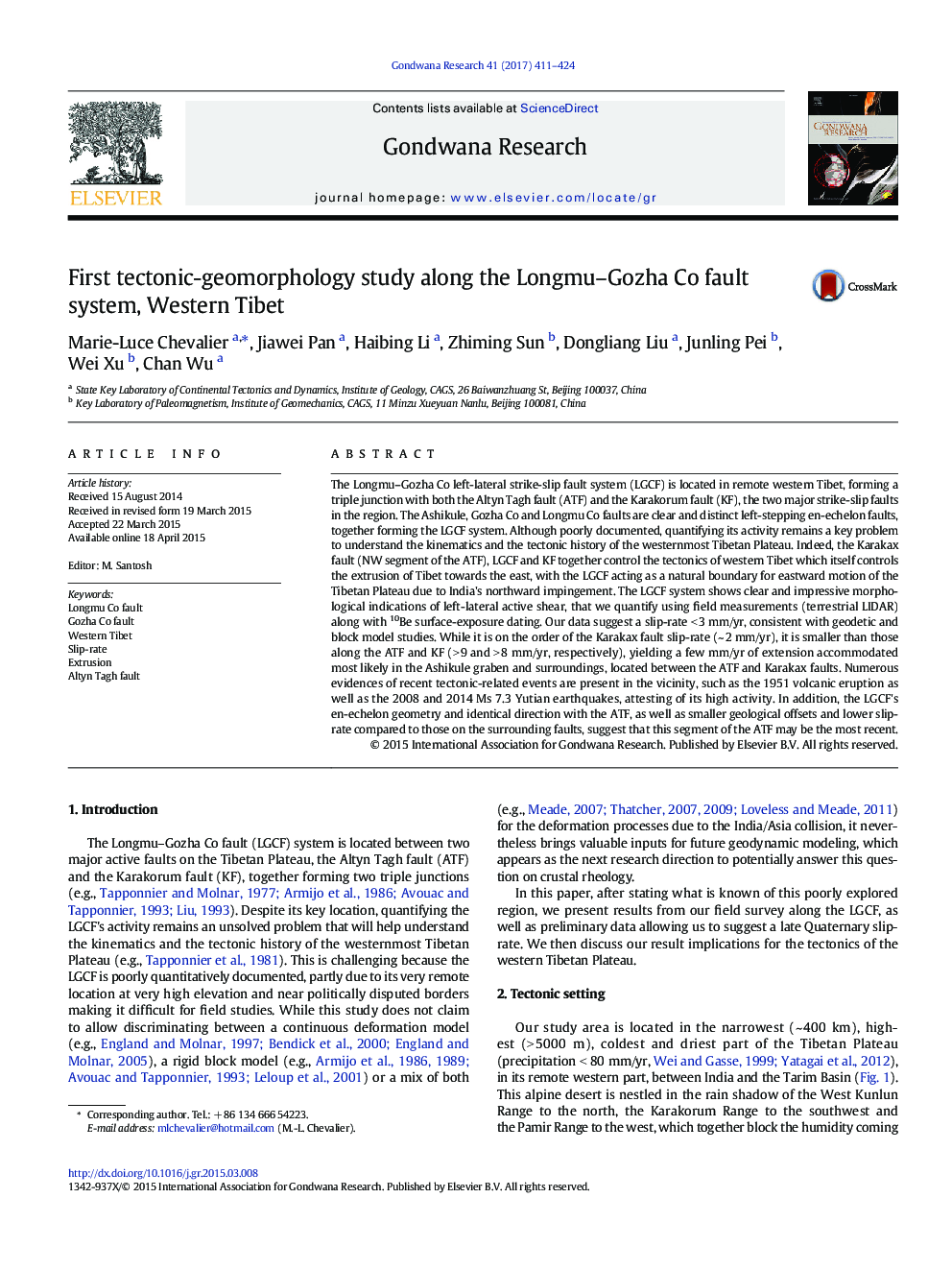| کد مقاله | کد نشریه | سال انتشار | مقاله انگلیسی | نسخه تمام متن |
|---|---|---|---|---|
| 5785416 | 1640130 | 2017 | 14 صفحه PDF | دانلود رایگان |
- The LGCF may be the most recent segment of the Altyn Tagh fault (ATF).
- It acts as a natural boundary for eastward motion of the Tibetan Plateau.
- The slip-rate of the LGCF (<Â 3Â mm/yr) is lower than that of the nearby ATF and KF.
The Longmu-Gozha Co left-lateral strike-slip fault system (LGCF) is located in remote western Tibet, forming a triple junction with both the Altyn Tagh fault (ATF) and the Karakorum fault (KF), the two major strike-slip faults in the region. The Ashikule, Gozha Co and Longmu Co faults are clear and distinct left-stepping en-echelon faults, together forming the LGCF system. Although poorly documented, quantifying its activity remains a key problem to understand the kinematics and the tectonic history of the westernmost Tibetan Plateau. Indeed, the Karakax fault (NW segment of the ATF), LGCF and KF together control the tectonics of western Tibet which itself controls the extrusion of Tibet towards the east, with the LGCF acting as a natural boundary for eastward motion of the Tibetan Plateau due to India's northward impingement. The LGCF system shows clear and impressive morphological indications of left-lateral active shear, that we quantify using field measurements (terrestrial LIDAR) along with 10Be surface-exposure dating. Our data suggest a slip-rate < 3 mm/yr, consistent with geodetic and block model studies. While it is on the order of the Karakax fault slip-rate (~ 2 mm/yr), it is smaller than those along the ATF and KF (> 9 and > 8 mm/yr, respectively), yielding a few mm/yr of extension accommodated most likely in the Ashikule graben and surroundings, located between the ATF and Karakax faults. Numerous evidences of recent tectonic-related events are present in the vicinity, such as the 1951 volcanic eruption as well as the 2008 and 2014 Ms 7.3 Yutian earthquakes, attesting of its high activity. In addition, the LGCF's en-echelon geometry and identical direction with the ATF, as well as smaller geological offsets and lower slip-rate compared to those on the surrounding faults, suggest that this segment of the ATF may be the most recent.
Interpretation of high-resolution digital elevation model obtained from LIDAR survey at GZC site, located along the Gozha Co fault.
Journal: Gondwana Research - Volume 41, January 2017, Pages 411-424
